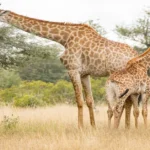The importance of the human role in biodiversity conservation has emerged more clearly in recent years. We can significantly contribute to preserving and protecting this priceless resource by understanding the risks it confronts and the interdependence of various forms of biodiversity.
The protection and administration of the variety of life forms present in various ecosystems is referred to as biodiversity conservation. It encompasses preserving species, their habitats, and the ecological processes that sustain them.
The fantastic variety of species, genes, and ecosystems that exist on Earth are all included in biodiversity, the exquisite tapestry of life. It is essential for the survival of both humanity and the earth.
Significance of Biodiversity Conservation
Biodiversity has great importance because it supports both human society and ecosystems, so to protect it human role in biodiversity conservation has great importance. Biodiversity improves soil fertility, provides resources for medicine, aids in the stability and resilience of ecosystems, and supports commercial endeavors like agriculture and tourism.
The protection of biodiversity has enormous advantages for both people and the environment. From an economic standpoint, it offers priceless resources, including food, medicine, and raw materials.
Ecosystems are guaranteed to be resilient and stable, which improves their ability to tolerate environmental changes.
Biodiversity influences our identities, traditions, and spiritual beliefs on a cultural level, enhancing our lives in innumerable ways.
Besides, biodiversity is vital for humans because it provides essential services such as water purification, nutrient cycle, climate regulation, and plant pollination.
The Need For Human Involvement
Human role in biodiversity conservation is of great value; the preservation of biodiversity cannot be achieved without active human participation. Humans have the potential and obligation to significantly contribute to biodiversity conservation as the dominant species on Earth.
Individuals, communities, and organizations must proactively promote sustainable lifestyles and preserve our natural environment.
Historical Perspectives of Human Impact on Biodiversity
Several human activities impact biodiversity
Human Influence Throughout History
Humans have shaped ecosystem biodiversity significantly during the course of human history.
Throughout history, humans have significantly impacted the variety of plants and animals in different environments.
Starting from ancient times when people hunted and gathered food to when farming and factories became common, what humans do has had a significant effect on the different kinds of living things on Earth.
Overhunting and Overfishing
Overhunting and overfishing have led to numerous species’ decline and even extinction. The unchecked exploitation of wildlife and marine resources disrupts the ecological balance and threatens the intricate web of interactions within ecosystems.
Habitat Destruction
The degradation and fragmentation of natural habitats caused by activities like deforestation, urbanization, and infrastructure development have significantly impacted biodiversity.
The displacement of species caused by habitat loss lowers their chances of surviving and reproducing.
Invasive Species
The introduction of invasive species, either intentionally or unintentionally, can harm native species and disrupt delicate ecological relationships. Invasive species often outcompete native organisms for resources and can devastate ecosystem dynamics.
Pollution
Pollution, including air, water, and soil pollution, harms biodiversity. Chemical contaminants directly harm organisms and can disrupt their reproductive cycles, impair their immune systems, and severely compromise their survival.
Climate Change
Various plants and animals face dangers due to weather changes; this change in weather is because of the increase in the earth’s temperature. Many species cannot adapt quickly enough to survive in altered environments, leading to ecosystem shifts and potential extinction.
Also Read: Top 10 Wildlife Sanctuaries in India
The Importance of Biodiversity
- Several ecosystem services are provided by biodiversity, like medicines, food, etc.
- Biodiversity maintains the environmental balance
- In maintaining balanced ecosystems, biodiversity plays a vital role.
- Biodiversity controls the cycle of nutrients
- Biodiversity help carbon sequestration
- In breaking waste, biodiversity plays a vital role
- It assures the availability of vital resources such as clean water and air
Soil Fertility and Nutrient Cycling
The fertility of the soil and the cycling of nutrients is influenced by a wide variety of species, including bacteria and decomposers. This, in turn, supports the growth of plants and sustains the intricate web of life in ecosystems.
Provision of Food and Medicine
Biodiversity provides many types of food sources for us, including vegetables, fruits, grains, and livestock.
Besides, many drugs from plant and animal species provide potential treatments and cures for various diseases.
Economic Benefits
Through initiatives like ecotourism and responsible resource use, biodiversity conservation can directly help the economy. Vibrant ecosystems attract visitors, generate income, and provide employment opportunities for local communities.
Biodiversity’s Role in Climate Change Mitigation
Biodiverse ecosystems such as forests and marshes act as carbon sinks. These ecosystems absorb and store carbon dioxide.
We may mitigate climate change by lowering greenhouse gas emissions by maintaining and restoring these environments.
Cultural Significance and Aesthetic Values
Biodiversity holds immense cultural significance and provides spiritual and aesthetic values to human societies. From traditional practices rooted in nature to the simple joy of experiencing diverse landscapes and wildlife, biodiversity enriches our lives profoundly.
The Role of Humans in Biodiversity Conservation
- Legal Framework and Policies
- National Conservation Efforts
Countries worldwide have formulated policies, regulations, and laws to conserve biodiversity. These can include establishing protected areas, implementing sustainable management practices, and enforcing wildlife protection legislation.
International Agreements
The Convention on Biological Diversity (CBD) and the United Nations Framework Convention on Climate Change (UNFCCC) are international agreements and conventions.
These agreements and conventions aim to frame a structure for countries worldwide to work together to protect nature. They encourage collaboration and the exchange of information and resources.
Protected Areas and Wildlife Reserves
Creating protected areas, national parks, and wildlife reserves provides vital habitats for threatened species and safeguards against further degradation. These designated areas help preserve biodiversity by minimizing human impacts and allowing ecosystems to thrive.
The Importance of Biodiversity Education and Awareness
Awareness about biodiversity and the environment is necessary
Environmental Education
Promoting environmental education is essential to fostering an appreciation of the significance of biodiversity and the necessity for its conservation. This education can range from official programs to grassroots initiatives.
It empowers individuals to make informed decisions and engage in sustainable practices.
Public Outreach and Communication
Creating effective communication channels to raise awareness about biodiversity conservation builds support and mobilizes resources.
Engaging the public through multimedia platforms, campaigns, and community events helps encourage responsible actions and decision-making.
Sustainable Use of Biodiversity
- Conservation Strategies
- Sustainable Agriculture and Forestry
Agroforestry and other sustainable agricultural methods, such as organic farming, can help reduce the harmful effects on biodiversity. Similarly, promoting responsible forestry practices, including reforestation and selective logging, ensures the preservation of forest ecosystems.
Responsible Fishing and Aquaculture
Implementing sustainable fishing practices, such as avoiding overfishing, minimizing bycatch, and establishing marine protected areas, helps protect marine biodiversity.
Additionally, promoting responsible aquaculture techniques reduces the pressure on wild fish populations and safeguards aquatic habitats.
Green Infrastructure and Urban Planning
Incorporating green infrastructure, such as parks, green roofs, and urban gardens, into urban planning helps create urban habitats that support biodiversity. It provides corridors for wildlife movement, reduces pollution, and enhances the overall well-being of urban dwellers.
Traditional Ecological Knowledge (TEK)
Indigenous and local communities often possess extensive knowledge about their surrounding environments. Integrating traditional ecological knowledge into conservation practices respects their wisdom and facilitates the identification of sustainable solutions that work in harmony with nature.
Collaborative Conservation Approaches
Collaboratively working with indigenous and local communities in biodiversity conservation projects ensures their rights and interests are respected.
This approach fosters a sense of ownership and empowers communities to become active participants in protecting their natural heritage.
Technological Innovations and Biodiversity Conservation
- Digital Mapping and Monitoring Systems
Using technologies such as remote sensing and Geographic Information Systems (GIS) for digital mapping and monitoring systems provide vital tools to keep an eye on biodiversity changes. These tools help identify threats, track habitat loss, and guide conservation efforts more effectively.
Conservation Genetics and Biotechnology
Conservation genetics and biotechnology advancements enable scientists to study and understand genetic diversity within species. This knowledge aids in developing strategies to restore genetic diversity and prevent the loss of unique genetic traits.
Drones and Remote Sensing in Monitoring Biodiversity
The use of drones and remote sensing technology revolutionizes the monitoring of biodiversity. These tools allow researchers to collect data from vast and inaccessible areas, aiding in habitat assessment, species surveys, and wildlife monitoring.
Successful Case Studies in Biodiversity Conservation
- Species Conservation Efforts
- Giant Panda Conservation in China
China’s efforts to develop protected areas and restoration of the Giant Panda’s natural habitat helped in saving this iconic species and stabilizing its population.
Sea Turtle Conservation in Costa Rica
Conservation initiatives in Costa Rica have successfully protected sea turtle nesting sites, implemented measures against illegal harvesting, and promoted community involvement in marine conservation.
Tiger Conservation in India
Launched in 1973, India’s Project Tiger has been instrumental in restoring tiger populations by establishing protected areas, putting anti-poaching measures in place, and encouraging community-based conservation.
Habitat Restoration and Protection
- Great Barrier Reef Conservation
The Great Barrier Reef, the biggest coral reef ecosystem in the world, is being preserved and restored by a variety of groups and stakeholders. Initiatives include reducing pollution, mitigating climate change impacts, and implementing sustainable tourism practices.
Amazon Rainforest Preservation
Various international collaborations and local efforts aim to protect the Amazon rainforest, the most biodiverse terrestrial ecosystem. Implementing measures against deforestation, promoting sustainable land use, and supporting indigenous communities contribute to the preservation of this invaluable resource.
Challenges and Threats to Biodiversity Conservation
There are several threats to biodiversity, and the human role in biodiversity conservation is of great importance; these threats include:
Deforestation and Habitat Loss
The unparalleled rate of deforestation worldwide, caused by commercial agriculture, logging, and urban expansion, poses a significant threat to biodiversity. Habitat loss disrupts ecosystems, reduces species populations, and increases the risk of extinction.
Climate Change and Its Impacts
Climate change-driven alterations in temperature, precipitation patterns, and sea levels have far-reaching consequences for biodiversity. Species are forced to adapt or face extinction, while ecosystems may shift or collapse entirely, jeopardizing the intricate web of life.
Illegal Wildlife Trade
Illegal wildlife trade, driven by demand for exotic pets, fashion items, traditional medicines, and rare species, fuels biodiversity loss. This black market significantly threatens endangered species and undermines conservation efforts.
Lack of Political Will and Funding
The lack of political will and inadequate funding for biodiversity conservation hinders progress in safeguarding ecosystems and species. Insufficient resources compromise conservation efforts, making it crucial to prioritize biodiversity conservation on the global agenda.
Collaboration and Partnerships for Biodiversity Conservation
Partnerships and collaboration are necessary to conserve biodiversity
Government Agencies and NGOs
For the conservation of biodiversity, cooperation between governmental and non-governmental organizations (NGOs) is essential. They combine scientific expertise, policy-making capabilities, and community engagement to implement effective conservation measures.
International Collaboration
International cooperation and partnerships between different countries and organizations are essential in addressing global challenges to biodiversity. Sharing knowledge, resources, and best practices enables more robust and coordinated conservation efforts.
Citizen Science and Volunteerism
Engaging citizens in scientific research and conservation projects through citizen science initiatives empower individuals to contribute directly to biodiversity conservation.
Volunteerism allows people to actively participate in hands-on projects, raising awareness and fostering a sense of stewardship for the natural world.
Future Perspectives and Emerging Trends in Biodiversity Conservation
- Technological Advancements and Their Impact
Technological advancements like big data analytics, biotechnology, and artificial intelligence have great potential for biodiversity conservation.
From developing predictive models to rapidly analyzing large datasets, these innovations enhance our ability to understand and protect biodiversity.
Integrating Biodiversity Conservation with Sustainable Development
Recognizing the interdependence of biodiversity conservation and sustainable development is crucial. Incorporating biodiversity considerations into agriculture, infrastructure, and energy sectors helps minimize negative impacts and create practices that harmonize economic growth with ecological preservation.
Climate Change Adaptation and Resilience
Addressing climate change impacts and building resilience within ecosystems and human communities are essential for biodiversity conservation. Strategies that promote adaptation, such as habitat restoration, species reintroductions, and the protection of climate refugees, help safeguard biodiversity in a changing world.
Conclusion
Biodiversity conservation is an urgent global priority that requires the active involvement of humans. Understanding the historical perspectives of human impact on biodiversity highlights the need for immediate action.
Recognizing the importance of biodiversity in providing ecosystem services, climate change mitigation, and cultural values further strengthens the case for conservation. Human role in biodiversity conservation encompasses legal frameworks, education, sustainable practices, and technological innovations.
Successful case studies, such as giant panda and sea turtle conservation, demonstrate the efficacy of collaborative efforts. However, challenges such as habitat loss, climate change, illegal wildlife trade, and lack of political will persist, necessitating collaboration and partnerships at multiple levels.
As we look towards the future, emerging trends, including technological advancements and integration with sustainable development, offer avenues for more effective conservation efforts in the face of climate change.







